This seaside Haiti town used to attract tourists. Now it draws refugees from gangs
Published in News & Features
JACMEL, Haiti — In Haiti’s capital city of Port-au-Prince, rifle-wielding gunmen rape, kidnap and pillage while people fleeing their homes hide in school yards, abandoned buildings and soiled makeshift camps.
In Jacmel, 60 miles from the capital, families sunbathe at the beach, shop at teeming markets and zip about on moto-taxis through crowded streets.
Two cities. Two vastly different realities of day-to-day life in this crisis-wracked country.
The gang violence engulfing Haiti’s capital has not reached the port city of Jacmel. But the sun-drenched former tourist hub is nonetheless feeling the effects, as tens of thousands of refugees fleeing the gangs’ terror bunk with family and friends in this sleepy remote corner of Haiti.
“Today there are two Haitis,” said Jacmel resident Roc Auxène. “There is one where the dangers are visible, where the people are living it, and the other, where it mostly has a psychological effect on us.”
In recent months, more than 60,000 refugees have fled to the southeast, half of them settling in its capital of Jacmel.
Despite Jacmel’s sense of calm compared to Port-au-Prince, there’s fear that the terror strangling the capital and its neighboring Artibonite region will spread.
“We may not have the fear of gangs kidnapping us, raping us… to the degree you are seeing in metropolitan Port-au-Prince and the Artibonite,” Auxène, a history teacher who is also the regional director for the education ministry for the southeast, said about life in Jacmel. “But it can reach here. It can reach Miragoâne. It can reach Aux Cayes.”
Hundreds of gangs have fueled an unprecedented exodus from the capital, with the number of Haitians displaced by the violence soaring to alarming levels since armed groups united earlier this year and escalated their attacks on state institutions.
More than 95,000 people fled the capital for the country’s rural provinces, most of them to the south, according to the United Nations’ International Organization for Migration.
A region of about three million people, the area known as the Great South includes the regional departments of Nippes, Grand’Anse and Southeast, places where rural and coastal towns were already struggling to recover from the COVID-19 pandemic, Hurricane Matthew in 2016 and two devastating earthquakes in a span of 11 years.
Now largely cut off from the capital, their residents are feeling the mental and economic toll of the gangs’ deadly hold.
Food and building supplies are scarce; prices are skyrocketing and a crisis is quietly building, residents say, as hunger and malnutrition spread and already overburdened government services, from healthcare to education, are stretched.
Communities long dependent on the highways linking them to Haiti’s congested capital for everything from fuel to imported food are hurting as gangs expand their territory. The attacks are cutting off trade and tourism and triggering mass migrations, and leaving communities already abandoned by the central government feeling even more so.
“This is not living,” said Marie Jocelyne Raphael, 56, a mother and grandmother who fled to Jacmel after gangs forced her out of her home in the town of Gressier on June 4 and later killed her brother. “God allows me to wake up everyday, but to be honest, I am not living.”
Nearly 600,000 displaced by gangs
More than 578,000 people have been displaced across Haiti, forced to abandon their homes and neighborhoods since gangs escalated their attacks after the 2021 assassination of President Jovenel Moïse.
This kind of mass migration has not been seen since the magnitude 7.0 earthquake struck Haiti in 2010, nearly wiping out all of Port-au-Prince and leaving more than 300,000 dead.
What the quake failed to do, the violence is now doing: marginalizing Port-au-Prince. But it doesn’t come without a cost.
“If thought isn’t given to this, soon, you could find that Jacmel becomes like Port-au-Prince,” said Dr. Dave Lawson Ortega Jean, 30, a physician who was forced to relocate to Jacmel with his family in June. “When people arrive they need to adapt, they have to live, they have to eat. If they find a house to rent, they need to be able to afford to pay and these are cities that don’t have a lot of jobs.”
Jean was living in Carrefour, a sprawling suburb west of Port-au-Prince’s city limits, when he decided on a Friday in late June to pack up his his wife and 4-year-old son and flee, leaving behind a private medical practice that employed four nurses and a receptionist.
“In Carrefour, you have two choices: work with the bandits or leave,” said Jean, who made the decision to leave overnight after coming home and finding several young armed men playing soccer in front of his gate and threatening him after he confronted them. “I always said the day that bandits came to shake me down, I would leave.”
Gang attacks over the summer left the city “without a single working police station,” he said, forcing even cops to flee.
“If you go to Carrefour you will see that it’s a city that is functioning, you will see everyone in the streets and working, but everyone is operating under great stress and fear, because at any moment gunshots can send people running,” said Jean.
Jean, who was forced to leave behind his car because gangs forbade private vehicles from the roadway, left at the first break of sunlight by public bus. They passed seven gang-controlled checkpoints, he said, before reaching Léogâne, a town near Jacmel, and paying nearly $100 in gangs’ crossing fees.
Three months into his new reality, he’s trying to rebuild his upended life, while holding on to hope that maybe the largely U.S. funded and Kenya-led police support mission that began deploying in June will make it possible to return home.
For now, he says, he’s trying not to jump every time a car or motorcycle pulls out in front of him. Despite financial struggles, Jean says he counts himself lucky. Many of the people ending up in the city have no means to start over and are struggling.
The only thing stopping the gangs from coming to Jacmel, he said, is “the effort still being made” by local cops, who have set up checkpoints, search buses entering the city and ask people for their identification. “The other thing that helps these communities is that everyone knows each other.”
‘Lots of problems’
Auxène, the education official who along with his wife has hosted relatives fleeing the violence, said the fight isn’t easy.
“We are living a very difficult situation,” Auxène said. “Lots of problems.”
Those problems run the gamut, from a lack of tourists to fuel what’s left of the economy in this colonial city known for its once lucrative coffee exports and colorful papier-maché Carnival masks, to figuring how how to deal with the influx of refugees, including an estimated 25,000 children.
Like the adults, the children have arrived with nothing but their clothes. They often lack school records and identification. Some have missed an entire year of school and will have to repeat a grade if their parents are fortunate enough to be able to afford uniforms and enrollment fees when classes resume next month.
UNICEF is trying to help regional directors like Auxène prepare for the new school year by identifying building that need repairs and where classrooms can be added. The ministry of education recently sent out a survey to its regional directors to determine how many extra teachers and staff are needed. Auxène’s report included a need for as many as 600 new hires.
Ronald Delice, who heads the local Civil Protection office, the government’s disaster-response agency, said local authorities are trying to do their best to respond while also averting another crisis. But it’s not easy.
The disaster-response office’s primary role has been to deal with natural disasters like life-threatening storms and earthquakes. But with the influx of refugees, the all-volunteer agency is also having to figure out how to shelter the displaced.
In Jacmel that means asking residents to host relatives and strangers alike in order to prevent refugee camps from popping up.
“We are working to see how much our bare hands can do. We know that the Haitian people are resilient,” Delice said. “But truly, there will come a time when we won’t be able to cope anymore.”
To defend themselves against armed groups, local authorities have turned to various means. There are radio spots where locals are urged to keep an eye out for suspicious individuals, and patrols spearheaded by a local security council that works with police, local authorities and residents.
Citizens’ self-defense groups, known as brigades, are increasingly emerging as a response by locals to take charge of their own security. However, they’re also worrying human-rights groups who fear the brigades could devolve into vigilantism amid increasing reports of suspected gang members being killed throughout Haiti without warning or due process.
“Regardless of where you are in Haiti, you have no choice but to be worried,” Delice said.
Porous borders
There are many ways to get to Jacmel, including the winding mountaintop Route de L’Amite, or Friendship Road, through a wrought-iron arch that welcoming visitors.
There is the sea, the land border with the Dominican Republic and a back road from Port-au-Prince through the mountains.
The region’s proximity to the Dominican Republic and the Haitian capital are a source of both relief and panic, residents say.
The rocky mountain roads that allow for commerce to seep through from the capital also means gangs can invade. An ongoing standoff between residents in Fond-Parisien, a rural town east of Port-au-Prince near the Dominican border, and one of Haiti’s most notorious gangs, 400 Mawozo, is being closely watched here.
Unable to cross into Fond Parisien to get to the capital, truck drivers are detouring through the narrow ridges of the southeast’s Chaîne de La Selle, Haiti’s highest mountain.
“The roads have become a graveyard of broken-down trucks,” said Delice.
Meanwhile, some traders are arriving here from the western Grand’Anse region by sailboat — a stark reminder of how easily the violence gripping Port-au-Prince can spread. As the capital’s facade changes, so too does its relationship with the population.
Once the center of life and the country’s gold standard for achievement, Port-au-Prince today is the target of anger. One young Jacmel resident, Jimmy Colin, said if it were up to him he would set the capital ablaze.
“Port-au-Prince,” he said, ”is stopping us from living.”
©2024 Miami Herald. Visit at miamiherald.com. Distributed by Tribune Content Agency, LLC.
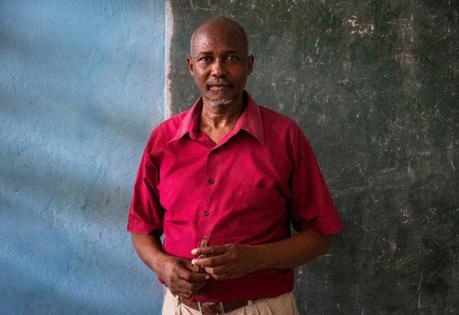
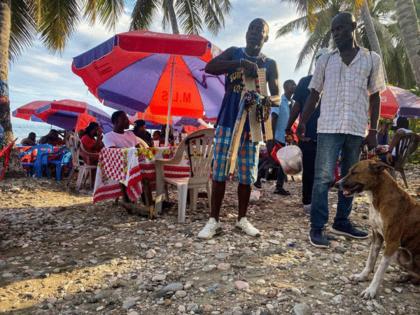
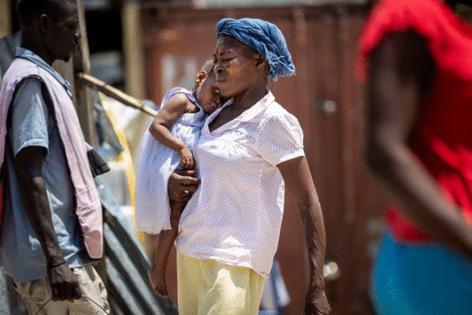
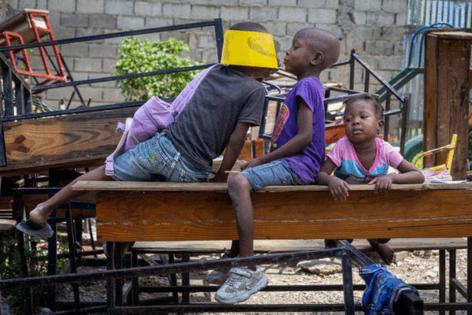
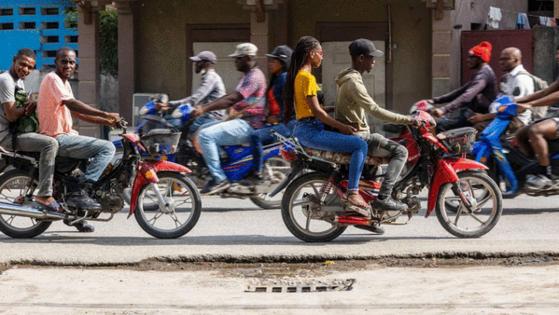











Comments